Take Better Travel Photos
The majority of us like to take photos when traveling, whether it be a vacation abroad or a domestic holiday. We like to photograph the things we saw, what we did, and the people we were with, so we can look back at the images and remember the good times we had.
But a simple record shot doesn't necessarily make for a great photo, no matter how exotic the location. In this article we'll look at at some tips for taking better travel photos.
Just what is Travel Photography?
Travel photography refers to photos depicting a specific location or culture. You don't necessarily have to travel to take travel photos - you can take photos that depict the uniqueness of your local area, such as local landmarks, landscapes, and people.
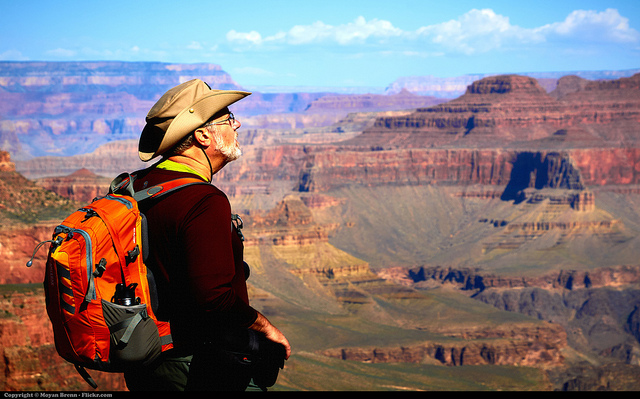
Travel by Moyan Brenn on Flickr (licensed CC-BY)
However, travel photography is more usually thought of as photos taken while traveling, which is what I'll focus on in this article. Taking photos while on vacation normally has a number of limitations such as time, the equipment you have with you, and the ability to communicate.
Travel photography is a good work out for your photography skills as it incorporates most other styles of photography. Landscape, food, portraits, architecture, details, candid / street, wildlife, night (and more) are all genres you'll likely cover in your travel photos.
The key to better photography - Time
While I'll share a few tips in this article, you'll notice one thing in common with them all - they all take extra time. A quick snapshot is a quick snapshot because you don't spend time thinking about the shot.
Better photography relies on planning, thinking about things like the composition, the best camera settings to use, the lighting, and also how the photo is processed. All these things take time.
You can't expect to take hundreds of quick snaps every day during your vacation and have them all turn out great. Just like any other type of photography, if you want great shots you'll have to put the work in.
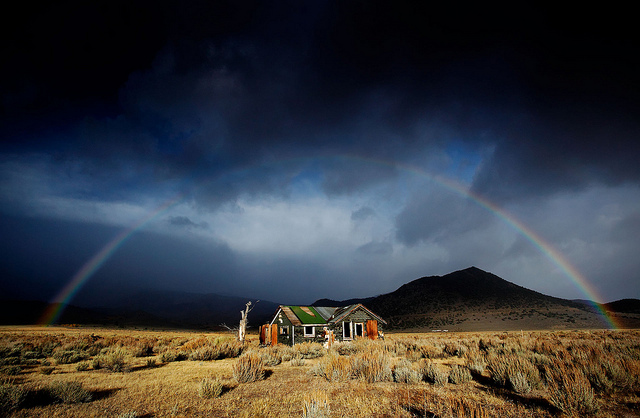
Lee Vining, Ca - Act 1: The Rainbow Shack by ™ Pacheco on Flickr (licensed CC-BY-ND)
Of course, one of the problems when on vacation is that you don't have a lot of time in a particular location. Maybe you're photographing a building that is currently in shadow, and would make a much better photo if you came back to shoot it at a different time of day. But you may well not have the time do that.
One of the things you can do in this situation is to just mostly take 'record shots' - quick snaps that record your vacation. Then try to put a little time aside each day dedicated specifically to photography rather than general sight seeing.
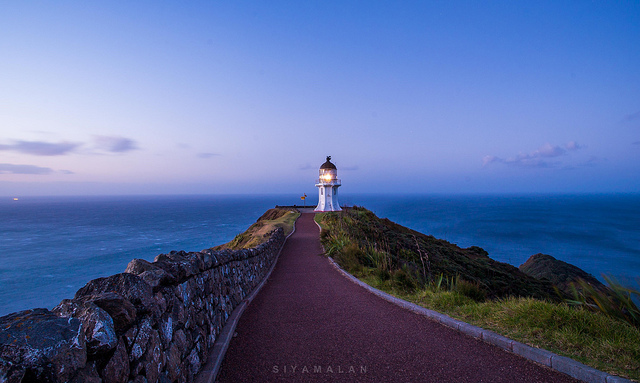
The Lighthouse - Cape Reinga by Siyamalan on Flickr (licensed CC-BY-ND)
The other option is to try and change what you're photographing. So you look specifically for subjects that will make for a good photo in the current lighting. Using the example of the building where the front is in the shade, photographing the building normally would likely result in a boring picture of a dark building against a bright sky. So you might look for another subject, such as a portrait of a local taken in the shade of the building.
Waterproof Camera
Having a waterproof camera can be very handy for travel photography. It lets you capture experiences such as snorkeling, swimming in a lake, showering under a waterfall, or even just relaxing in the pool. It can also be great for photographing in streams and rivers, giving a different perspective to the normal above water shots.
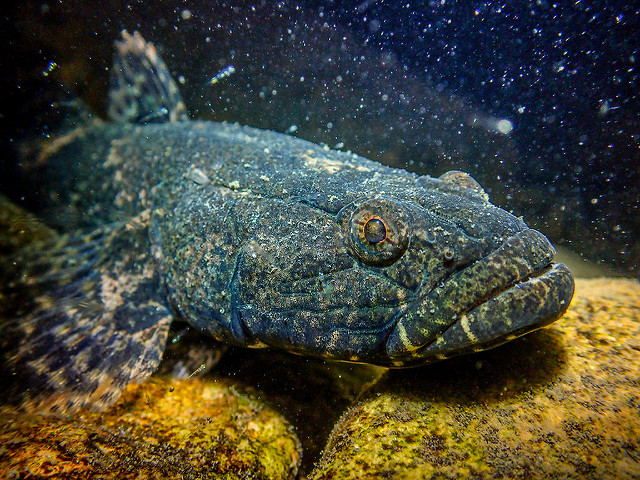
PhoTones Works #5423 by Takuma Kimura on Flickr (licensed CC-BY-SA)
While most cameras can handle a small amount of light rain with no problem, a waterproof camera even lets you carry on shooting in a torrential downpour. If you're out in heavy rain, a photo helps you capture the experience and show exactly what it was like. Travel photography is not just about blue skies and sandy beaches, but real experiences.
Waterproof housings for DSLR cameras tend to be bulky and expensive. Instead I would suggest either a (relatively) cheap waterproof compact camera, or a waterproof case for your phone or compact camera. This allows you to always have a waterproof camera with you, so when a situation arises that would make for a good photo, but needs a waterproof camera, you can take the shot.
Look for contrast
There are three different types of contrast, and all can be used effectively for stronger images.
Color contrast refers to colors that contrast strongly against one another, for example a person wearing yellow and standing against a blue wall. The contrast between the two colors helps separate the subject from the background, and draws the viewer's attention.
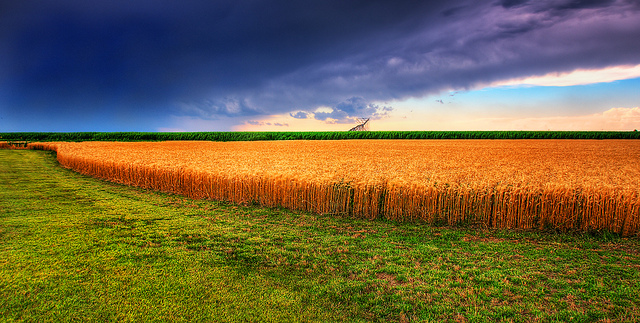
Kansas Summer Wheat and Storm Panorama by James Watkins on Flickr (licensed CC-BY)
Tonal contrast refers to differences in brightness, for example a building lit by the setting sun with dark stormy clouds in the background behind it. Tonal contrast is particularly important for good black and white photos.

Hurry (Explore July 12, 2014) by Anne Worner on Flickr (licensed CC-BY-SA)
Conceptual contrast refers to the contrast between elements within the image on a conceptual level. For example, you might have a person in traditional dress standing outside a McDonalds. Or someone smoking next to a no smoking sign. Or something small next to something very large. You have to be quite aware to notice this kind of contrast, as it doesn't jump out at you as much as contrasts in tone or color.
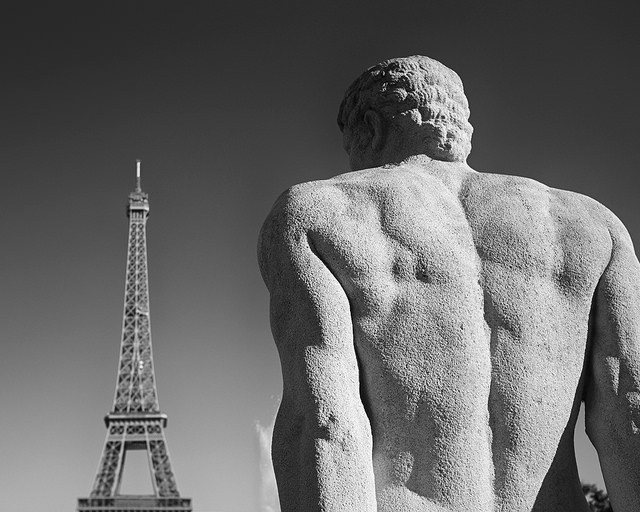
*** by Alexey Druzhinin on Flickr (licensed CC-BY)
All three types of contrast help draw your eye to the subject. It is important that the contrast is just between the subject and the background though. If you have a background with various contrasting elements in it, then the eye can be pulled more to the background than the subject.
Planning & Research
In my opinion it is a good idea to plan for some things, while leaving others to chance. One of the parts of traveling that makes it enjoyable is the unexpected, finding new places and having new experiences. If you plan too much, you know what to expect and that enjoyment is diluted.
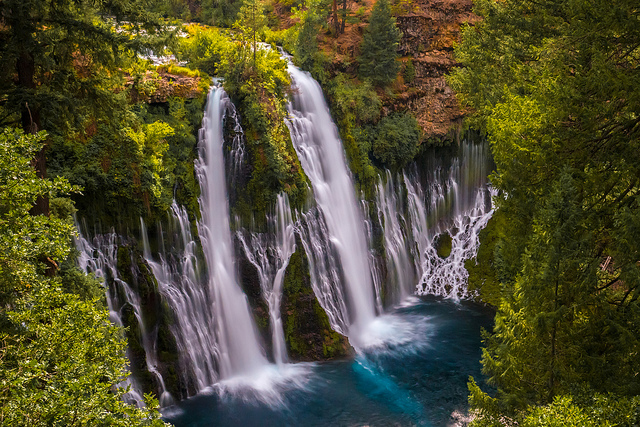
Most beautiful Falls in California by Krishna Santhanam on Flickr (licensed CC-BY-ND)
On the other hand, if you don't plan at all you'll find yourself getting to locations when they're at their most busy and the light most unflattering.
If possible, try to plan at least part of your day around the photos you want to capture. For example, if there's a particular landmark you'd like to photograph, try to figure out in advance where you'd like to shoot it from. What time of day would be best to shoot it at? You need to think about things like the light direction, how busy it will be, and whether you can even access the area at that time.
Tools such as Google Maps, Google Earth, and The Photographer's Ephemeris can be very useful at this planning stage. The Photographer's Ephemeris can show you the direction of the sun at sunrise and sunset in relation to any spot on the map. It also gives you the sunrise, sunset, and twilight times at that location on any day.
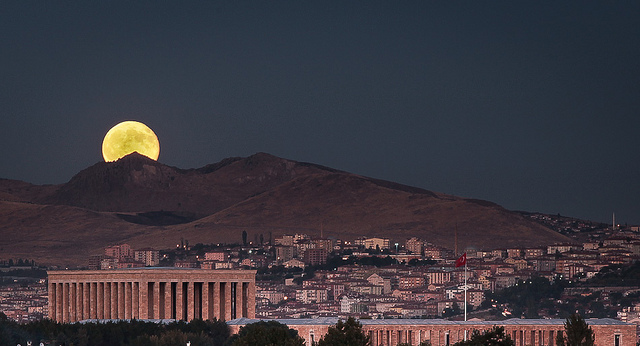
Anıtkabir - Ankara - Turkey by Nezih Durmazlar on Flickr (licensed CC-BY)
Google Maps and Earth can help in allowing you to see the area around a particular location. You can see photos others have taken in the same area. And you can use streetview (in many cases) to get an idea of what the view is from a location.
With all this information in hand you can plan your day so that you get to the location at the right time and right place to get the shot you envisioned. It's unlikely you'll be able to do this for everything you want to see and do while traveling, but it can help you get some great shots.
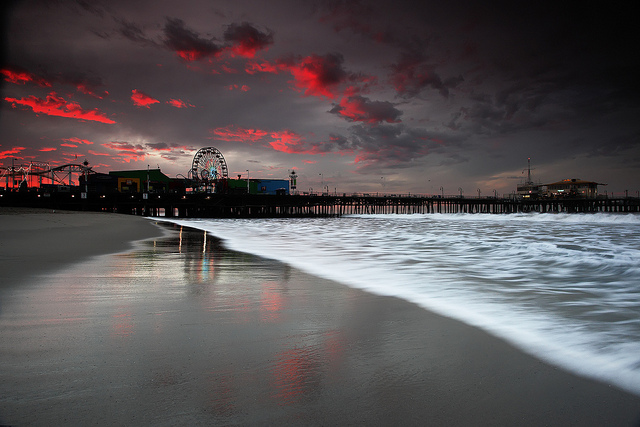
Santa Monica Pier at Sunrise - Lost Transmissions by ™ Pacheco on Flickr (licensed CC-BY-ND)
In some instances you may visit a location, and think that it would look much better at a different time of day. So, if possible, then make an effort to come back at that time of day. It may seem a waste of precious vacation time to visit the same location twice. But it can help you get much better photos of that location. You'll also likely notice things on your second visit that you missed the first. It's far from a waste of time.
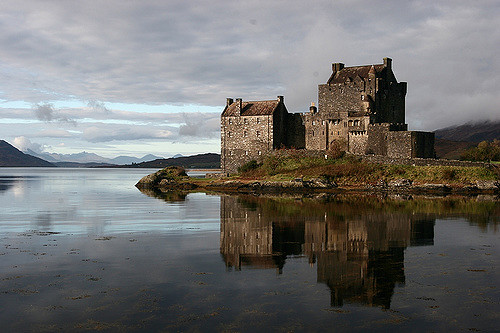
Eilean Donan Castle by Sonja Pieper on Flickr (licensed CC-BY-SA)
Sort & Edit
If you have time, it is a very good idea to do at least some sorting (and maybe even basic editing) of your photos while still on vacation. This makes it much easier to sort through and work on your photos when you get back home. Otherwise you're just left with a giant job, which can put you off from ever starting the work of going through them and selecting the best shots.
Sorting the photos by location is one basic thing you can do while away. If possible, add some more specific keywords that can help you identify what the photo is of and exactly where it was taken. While this may not be important in terms of the image's impact as a good photo, it doesn't hurt to have extra information about the image content to share, especially if you ever want to license the image as stock.
Group together images that you took intending to blend together, such as for panoramas or HDR. You may want to do some rudimentary editing of some images, especially if you already have an idea of where you want to go with the post production. This acts as a pointer for later when you have more time to work on the images.
You can also share some of your best images from each day on social media, to show people where you've been that day, and keep them engaged with your photography.
It's also important to mention that you should be backing up your photos each day. Unless the photos aren't important to you, you want to make sure you have a backup. And keep the backup in a separate place to the main copy.
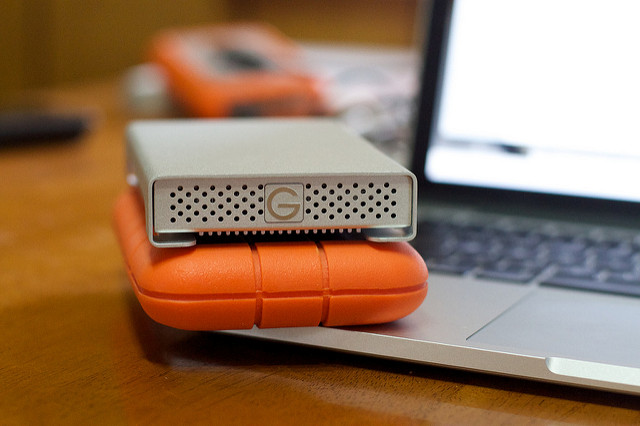
Dead or Alive Drives? by Alan Levine on Flickr (licensed CC-BY)
Yes, having a backup involves extra time each day to do the backup. And it's extra expense for the backup drive too. But is it really worth the risk of having your laptop or memory cards stolen, or a drive / card becoming corrupted, and loosing all your photos from the trip?
Make a connection
For portrait photos it is best to make a connection with your subject before photographing them. While this initially prevents capture of a candid moment, it ensures that the subject is happy with you photographing them and avoids any confrontation.
You can ask them for a posed portrait, or ask them to go back to what they were doing while you chat to them. After a short period, they'll become more comfortable with you, and it will be much easier to get natural shots.
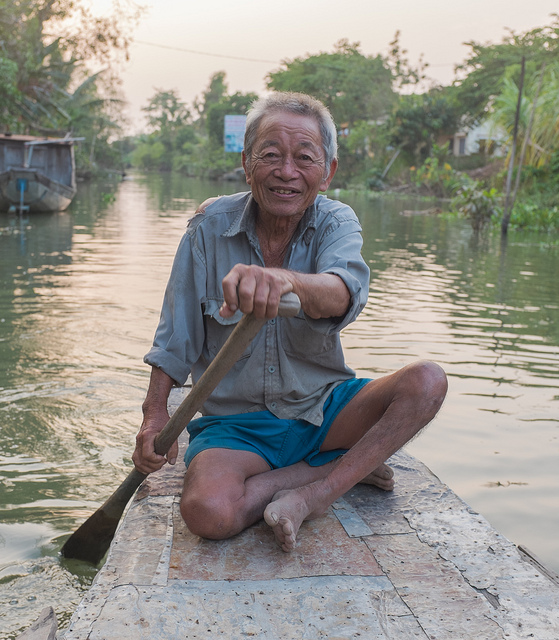
Still Rockin' by Christopher Crouzet on Flickr (licensed CC-BY)
Language can be a barrier, but generally you can hold up your camera to show you'd like to take a photo and be able to understand whether or not the subject is happy to have their photo taken. Treat your subjects with respect, not as a 'trophy' photo, and you'll be able to capture much more intimate, real images.
One other way of making a connection is via a guide or fixer. These are people that live locally and can show you around, and translate for you. If you want to find out about interesting locations only the locals know, or visit inside a local home, then a guide or fixer is a great idea.
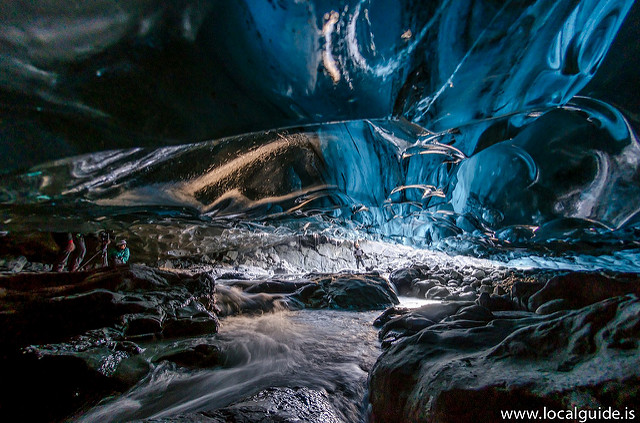
Local Guide by Glacier Guides on Flickr (licensed CC-BY-ND)
A guide or fixer does cost quite a bit, but the cost will vary depending on how rich / poor the location you're visiting is. In some cases you may be able to band together with fellow travelers and share the cost of hiring a local guide between you. Bear in mind also that most of the money will go back into the area you're visiting, which is less likely to be the case when joining a tour set up by large travel agents.
The trick to a strong set of travel photos
When on vacation you may well take hundreds of photos each day. The majority of those photos will be nothing special. You don't want to share every single photo you take, not even half of them, but only a very select few.
Just select your best photos, limiting yourself to one or two photos from each day. You'll end up with a much stronger set of images that will hold the viewer's attention.
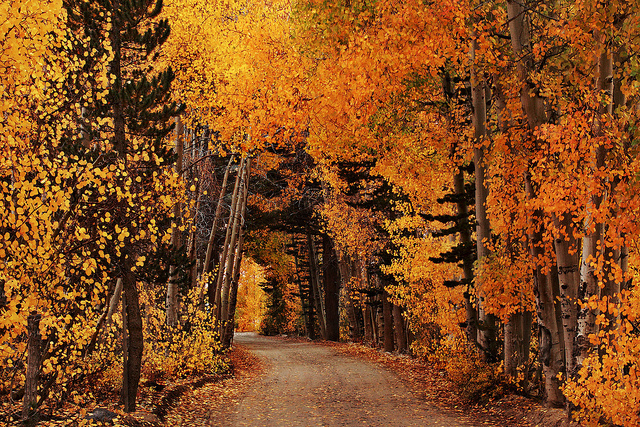
Leaf Tunnel at North Lake, Ca - Crayola Snowdrifts for Mizzy by ™ Pacheco on Flickr (licensed CC-BY-ND)
Going through your photos to sort only the best will take some time - you'll likely need to make multiple passes, narrowing down your selects further each time. This is part of the reason why it's good to do some sorting of your images while still away - you can mark your best shots there and then so you have a smaller set to sort through when you get back.
To sum up, better photos take more time. This is true for all types of photography, not just travel photography. The actual shot may be quick (or it may not) but there is often quite a bit of work and / or waiting before the photo is made.
Vacations can be quite hectic, especially if traveling with family. So try to secure a small amount of time each day (and plan in advance) so you can give your subjects the time they deserve. It won't always work out, but you're certain to come back with a better set of photos than you would otherwise.
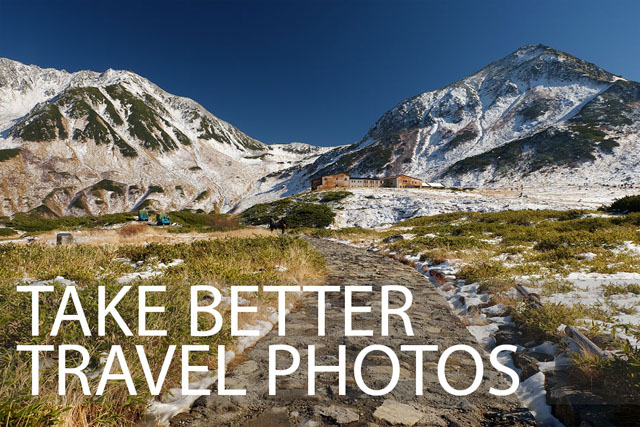
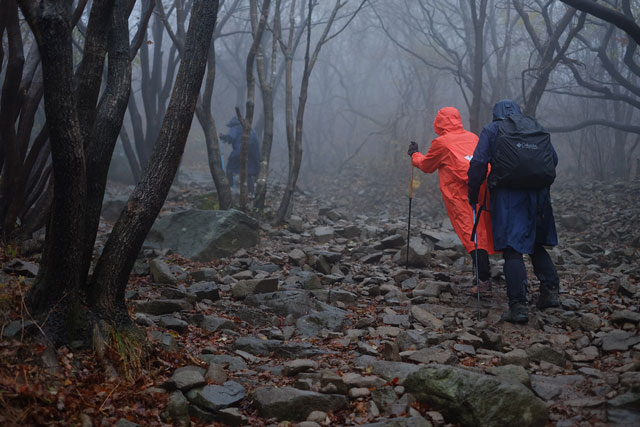
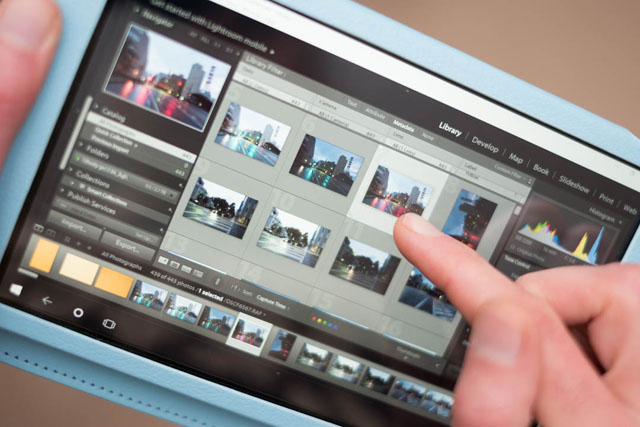





Dear Sir,
You have done a wonderful job here, not only on how to but also addressing other issues about travel photography such as shortage of time, no second visit, wrong timing and so on. I found this article very informative as guided me through some of the issues I face while travelling and photographing.
Thanks.
Sincerely yours,
— Ravindra Kathale